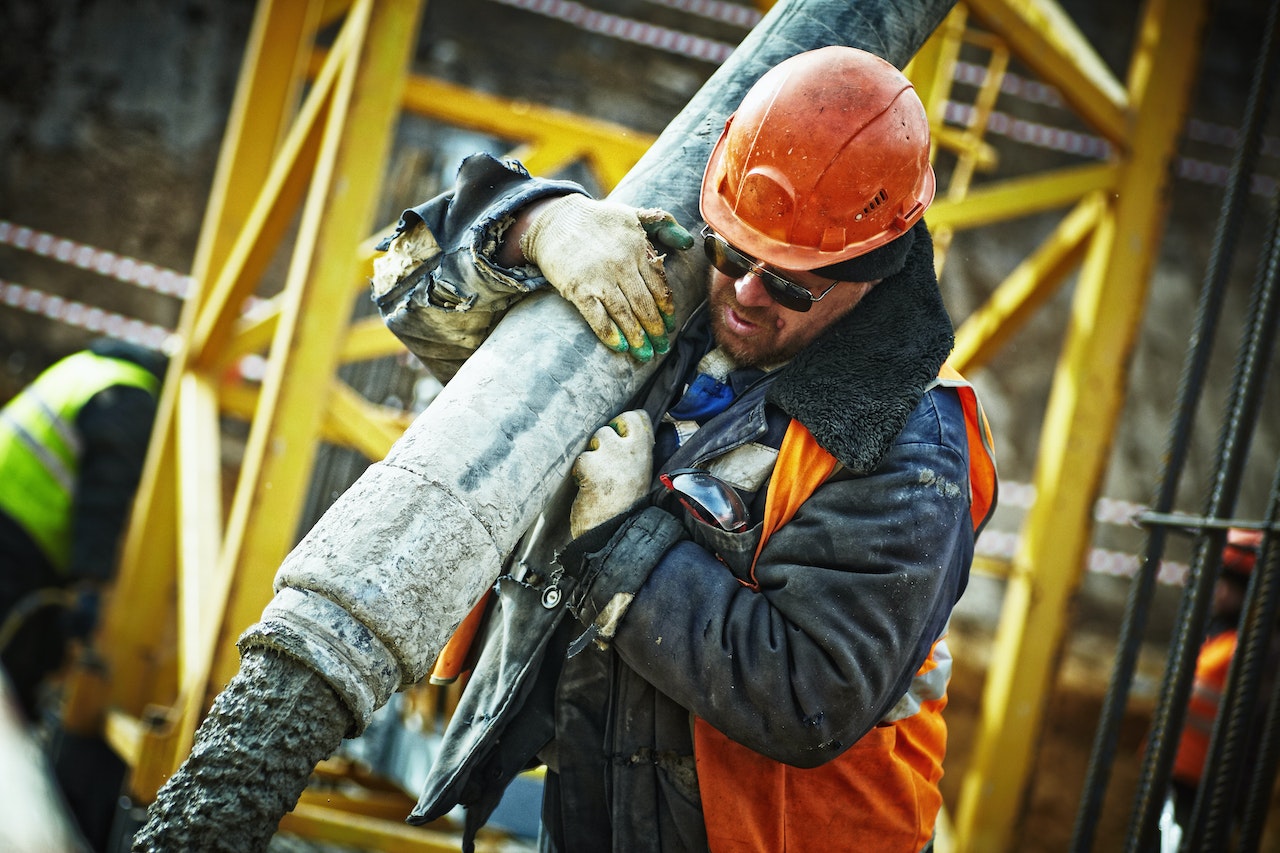Comments
- No comments found

For many manufactured goods, the output can be produced in many different places–including other countries–and then shipped to where it is needed.
Moreover, manufacturing jobs in industries around the world are being challenged by the rise of automation: in particular, high-tech industries like, say, semiconductor manufacturing, are extremely capital-intensive, with relatively few jobs.
In comparison, for construction jobs, the output typically needs to be produced in the particular place where it is used. You can’t outsource production of a highway or an apartment building. Sure, construction jobs involve heavy equipment, but they also involve a substantial number of jobs. Consider the trends in manufacturing and construction jobs over time. In the last four decades, in particular, the trend in manufacturing jobs is mostly down and the trend in construction jobs is mostly up.
There is a degree of substitutability between certain manufacturing and construction jobs. As an example, look at the patterns in the early 2000s, when there was both a boom in construction jobs and a drop in manufacturing jobs. For more discussion, see the discussion of this period by Kerwin Kofi Charles, Erik Hurst, and Matthew J. Notowidigdo in the Spring 2016 issue of the Journal of Economic Perspectives (where I work as Managing Editor), “The Masking of the Decline in Manufacturing Employment by the Housing Bubble.”
As I’ve written before, it seems important to me that the US economy have a strong and healthy manufacturing sector, in part because innovative technologies are often linked to activities that are being carried out nearby. But when it comes to jobs for medium-skilled workers, manufacturing jobs are unlikely to come back in force. Could jobs in a substantially expanded construction industry fill some of this gap? Consider some examples.
Housing prices are high in many urban areas, and an increase in supply would help to keep those prices from continually rising further. Also, many downtown areas are experiencing a substantial drop in the need for office space, as work-from-home patterns (at least a few days each week) take root. The transition of existing office buildings to alternative uses, whether it’s housing, retail, restaurants, entertainment, or something else, is an enormous construction task.
Construction is involved in the ongoing energy agenda, both building solar and wind generation, but perhaps even more in building the transmission lines to take the electricity to where it is needed. I’ve heard comparisons between the amount of additional transmission capacity needed analogized to the effort it took to build the interstate highway system. Fires in California, Hawaii, and elsewhere suggest the need for construction to make power lines more safe. At a bigger level, it seems important to think seriously about what is needed to “harden” the electrical grid against the risk of electromagnetic pulses, whether generated naturally by solar flares or by weapons. I’d also add that America’s pipelines for carrying oil and natural gas are a far safer method of transport than using trucks and trains to carry these materials, and they could use updating as well.
As use of internet capacity continues to grow rapidly, construction of data servers and the wired and wireless communication lines to use them continues to grow.
Many areas are living with infrastructure that was built decades ago: old city water systems, drainage and runoff tunnels, old dams, old sewage treatment plants, and old public lighting. There are old bridges and roads, old seaports and airports. In a number of agricultural areas, construction projects to filter runoff from fields is needed to protect streams, lakes, and aquifers. Many K-12 schools could use a serious upgrade to their physical plant , along with some community colleges and public universities, as well.
Readers can probably add to this list. I’m not suggesting that this list requires yet another large federal spending program. In many cases, the spending should be directed by private firms and state or local local governments. Also, I recognize the problems with prioritizing and managing large construction projects. But when I look out across the US economy, I don’t see an enormous shortage of manufactured goods. I do see a need for a sustained push in construction projects that, if we were ever to reform our political process of permits and reviews and get started on these projects in earnest, would still take several decades to complete. And as an engine for growth in medium-skill US-based jobs, construction seems far more promising to me than manufacturing.
Timothy Taylor is an American economist. He is managing editor of the Journal of Economic Perspectives, a quarterly academic journal produced at Macalester College and published by the American Economic Association. Taylor received his Bachelor of Arts degree from Haverford College and a master's degree in economics from Stanford University. At Stanford, he was winner of the award for excellent teaching in a large class (more than 30 students) given by the Associated Students of Stanford University. At Minnesota, he was named a Distinguished Lecturer by the Department of Economics and voted Teacher of the Year by the master's degree students at the Hubert H. Humphrey Institute of Public Affairs. Taylor has been a guest speaker for groups of teachers of high school economics, visiting diplomats from eastern Europe, talk-radio shows, and community groups. From 1989 to 1997, Professor Taylor wrote an economics opinion column for the San Jose Mercury-News. He has published multiple lectures on economics through The Teaching Company. With Rudolph Penner and Isabel Sawhill, he is co-author of Updating America's Social Contract (2000), whose first chapter provided an early radical centrist perspective, "An Agenda for the Radical Middle". Taylor is also the author of The Instant Economist: Everything You Need to Know About How the Economy Works, published by the Penguin Group in 2012. The fourth edition of Taylor's Principles of Economics textbook was published by Textbook Media in 2017.
Leave your comments
Post comment as a guest